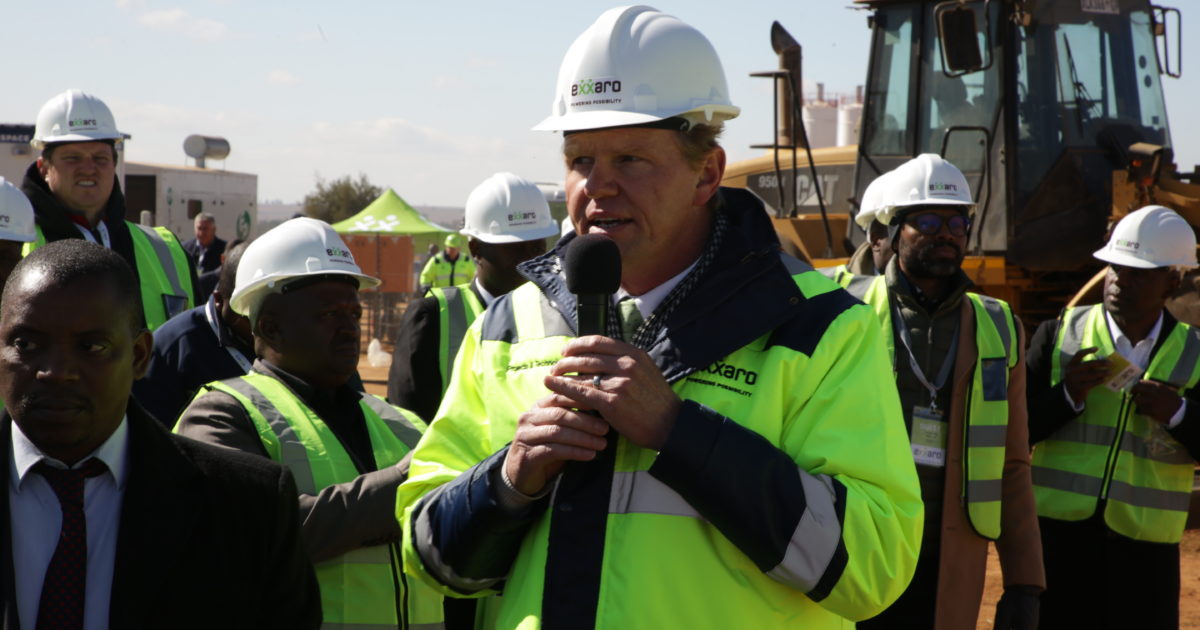The answer is simple: “It’s capitally intensive.
“It’s like asking me to take an old car, 20 years old, and add a new dashboard with a GPS device or oil temperature [gauges]. It will cost you money.”
Once the mine has access to real-time data, on and off site, the digital twin can be used for simulations.
“Like in the airline industry, you train the pilots on simulators. So in the corporate office, we can simulate the mine plans; we can simulate [what happens] if you do these benches first and those benches later; or if the crusher only runs that much, you can have this type of throughput – so the digital twin gives you the ability to create simulated scenarios.”
There is, however, a learning curve. “You have to be patient and gather a lot of data to make sure that the digital twin has the ability to give you better guidance to run the mine more efficiently,” Meyer says.
Change management
The R3.3-billion project is currently seven months into construction, with commissioning planned for 2020. During life of mine – estimated at 17 years – it will provide more than 4,700 jobs.
This could reduce unemployment in the municipal district by 2%. However, the move to a ‘digital mine’ will obviously have an impact on jobs.
“You don’t need to employ hundreds of people to monitor a thousand pieces of equipment. With data analytics and data available, you will have less people,” says Meyer.
“We have to be competitive.
“We have to balance our costs; it will mean less jobs, but we will be there for the long term. We are also planning phase 2 of this mine, which could lead up to 30 years of running this mine. We would like to be competitive; not just for the mine, but for the country – we need to be able to compete with producers in China, India and Indonesia.”
The new technologies will also affect how the jobs are done. Above all, staff at the mine will have to be quick leaners.
“In some of our current mines, our operators would go by a pump, take some readings, put it on a piece of paper, then it's going to be transferred onto an Excel spreadsheet, and from there the head of operations will analyse it and make alternative plans.”
With BIP, Exxaro wants to push decision-making lower down the operation and command chain. Its employees need to be able to change and adapt to the new digital era.
“Every employee should be adaptable to work with new tools, to interpret new data, make quicker decisions, have ownership of that decision-making and be accountable.”
Innovation fit for purpose
While integrating advanced technologies is a significant focus of the BIP development, whether this is drones surveying the current construction site or the digital twin design, the mine is still sticking to innovations and equipment that are fit for purpose.
Meyer believes that mines of the future will be run on solar power, off the grid, as energy efficiency becomes an increasingly important part of mine design, and electric batteries will power 200t trucks driving around autonomously.
“You can already see [autonomous vehicles] at mines in Australia. But [as] they move 300 million tonnes per annum, then you can afford to put in a billion dollars’ worth of kit to make sure the mine is run for 20 years.
“Here we only move a few million tonnes, so you can't put a billion-dollar kit on this mine; you'd never make a profit.
“It's about how the curve of the cost of autonomy will come down so that you can automate your mine; for now you have to kit yourself out with the means you have at the best price, lowest capital, and then you drive up productivity at the lowest cost.”
For Exxaro, getting real-time data from pit to port is key. It’s not only about having particular pieces of equipment connected to the IoT, transferring data, the miner wants to monitor the whole supply chain.
